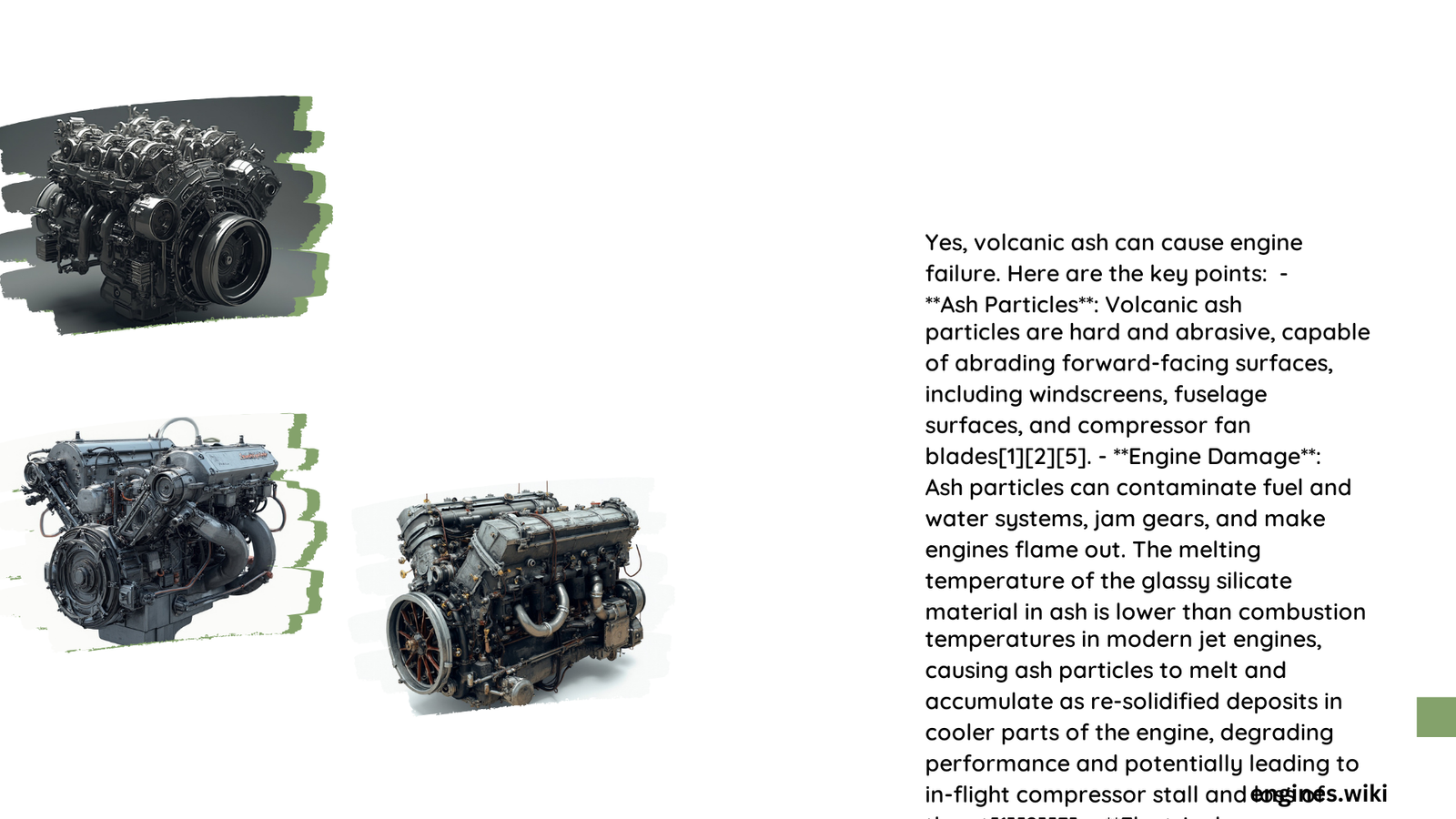Volcanic ash can indeed cause engine failure in aircraft, posing a significant threat to aviation safety. The ingestion of volcanic ash particles into jet engines can lead to severe damage, performance degradation, and potential engine shutdown. This article explores the mechanisms by which volcanic ash affects aircraft engines, the extent of damage it can cause, and the implications for flight safety.
How Does Volcanic Ash Affect Aircraft Engines?
Volcanic ash poses a serious threat to aircraft engines due to its unique properties and the extreme conditions within jet engines. Here are the primary ways volcanic ash can impact engine performance:
- Erosion of Engine Components: The abrasive nature of volcanic ash particles can erode critical engine parts, including:
- Fan blades
- Compressor blades
-
Fuel spray nozzles
-
Clogging and Corrosion: Ash particles can:
- Resolidify on cooler engine components
- Block cooling holes
-
Cause chemical reactions with engine materials
-
Accretion and Blockage: Accumulated ash can:
- Block internal throat areas between vane airfoils
- Alter critical safety surge margins
-
Lead to loss of controllable thrust
-
Performance Degradation: Ash ingestion can result in:
- Melting and re-solidification of particles in the turbine section
- Reduced engine efficiency
- Potential compressor stall and loss of thrust power
What Are the Quantitative Impacts of Volcanic Ash on Engines?

The severity of engine damage from volcanic ash depends on various factors:
- Particle Size:
- Critical size range: Few micrometers to several hundred micrometers
-
Particles < 100 micrometers are particularly hazardous
-
Concentration Levels:
- As low as 1 mg/m³ can be problematic
-
Significant degradation observed at 10 mg/m³ within 10 hours of exposure
-
Repair Costs:
- Can be substantial, e.g., US$150 million for a 4-engine shutdown incident in 1989
What Are the Safety Implications for Aircraft?
Volcanic ash ingestion can have severe consequences for aircraft safety:
- Engine Failures:
- Multiple cases of engine shutdowns due to ash ingestion
-
Risk of uncontained rotor failures
-
Performance Issues:
- Reduced engine efficiency
- Increased fuel consumption
-
Potential loss of thrust
-
Operational Challenges:
- Need to avoid ash-contaminated airspace
- Importance of monitoring for signs of ash ingestion
- Requirement for immediate action to vacate contaminated areas
How Does Volcanic Ash Impact Turbine Performance?
The effects of volcanic ash on turbine performance are significant:
- Efficiency Degradation:
- Observable within 1 hour at low ash concentrations
-
Rapid degradation within 3 hours at high concentrations
-
Fuel Consumption:
-
Increased specific fuel consumption due to reduced engine efficiency
-
Component Damage:
- Erosion of turbine blades
- Accumulation of re-solidified ash deposits
What Maintenance Protocols Are Necessary?
To mitigate the effects of volcanic ash exposure, specific maintenance procedures are crucial:
- Regular Inspections:
- Frequent cleaning or replacement of air filters
-
Engine water washes to remove fouling
-
Damage Assessment:
- Inspections for signs of erosion, clogging, or corrosion
-
Engine analytical condition inspections after ash exposure
-
Repair Planning:
- Based on the extent of damage observed during inspections
In conclusion, volcanic ash can indeed cause engine failure, presenting a significant risk to aircraft safety. Understanding these risks and implementing proper maintenance and operational protocols are essential for mitigating the dangers posed by volcanic ash to aviation.
